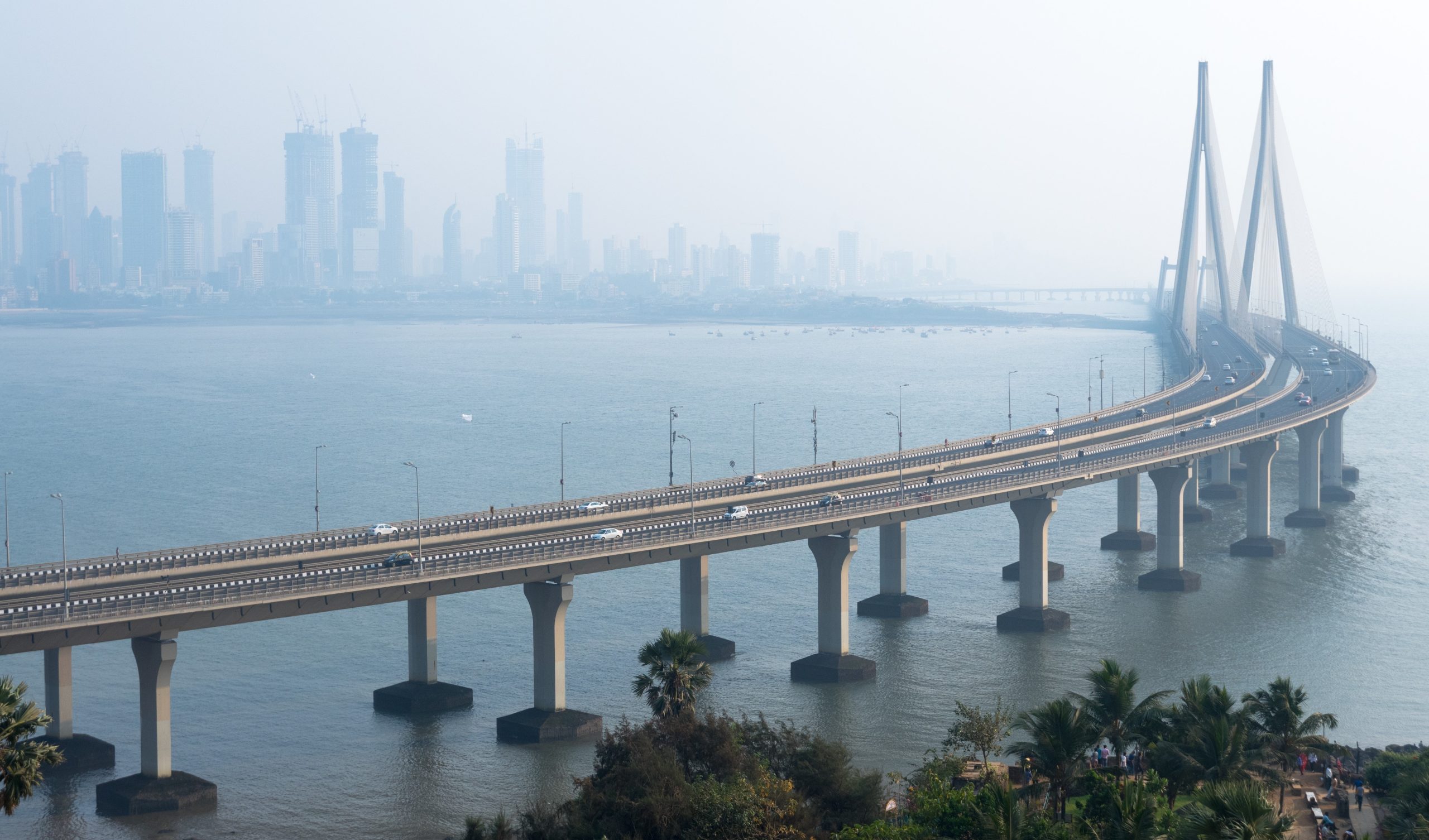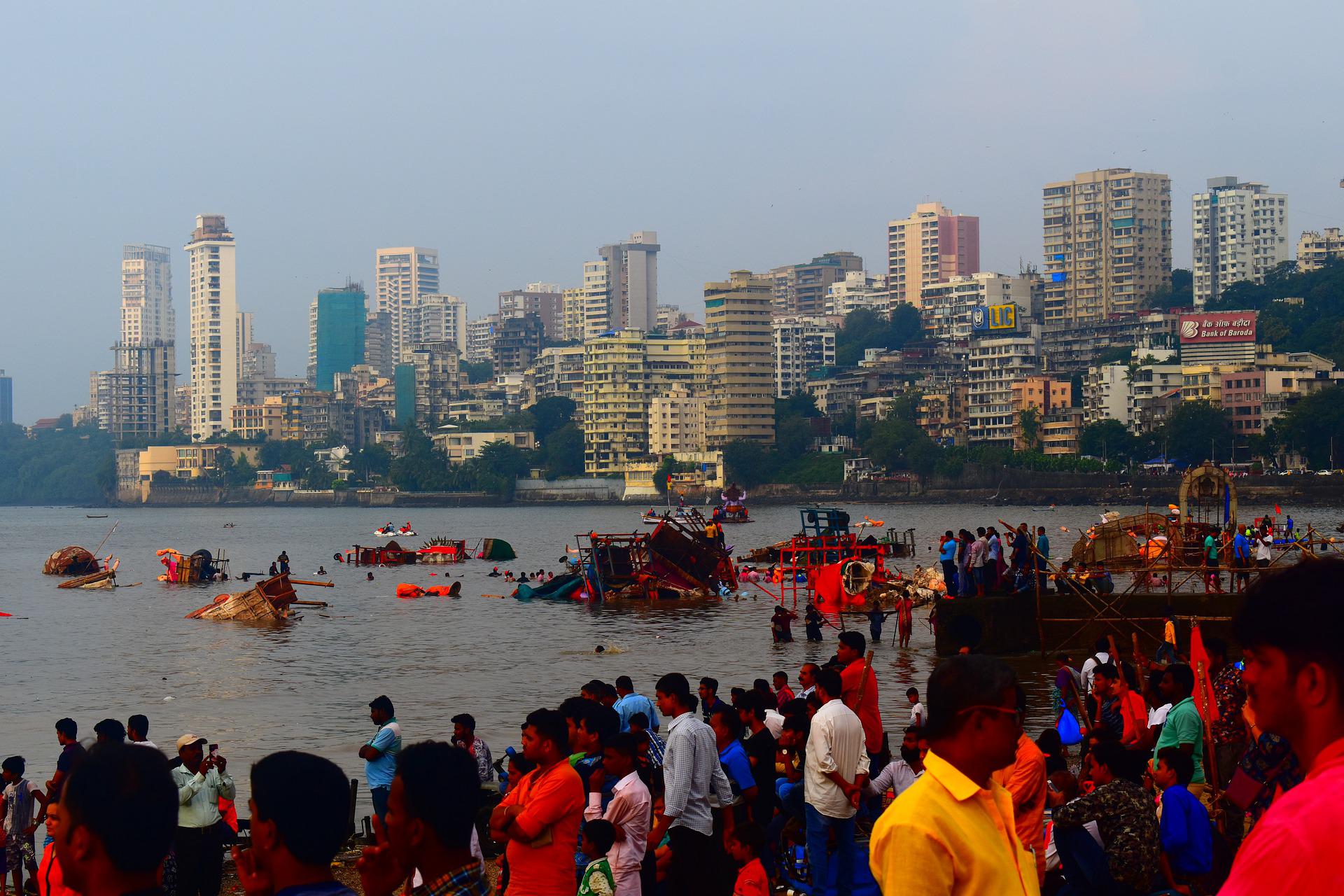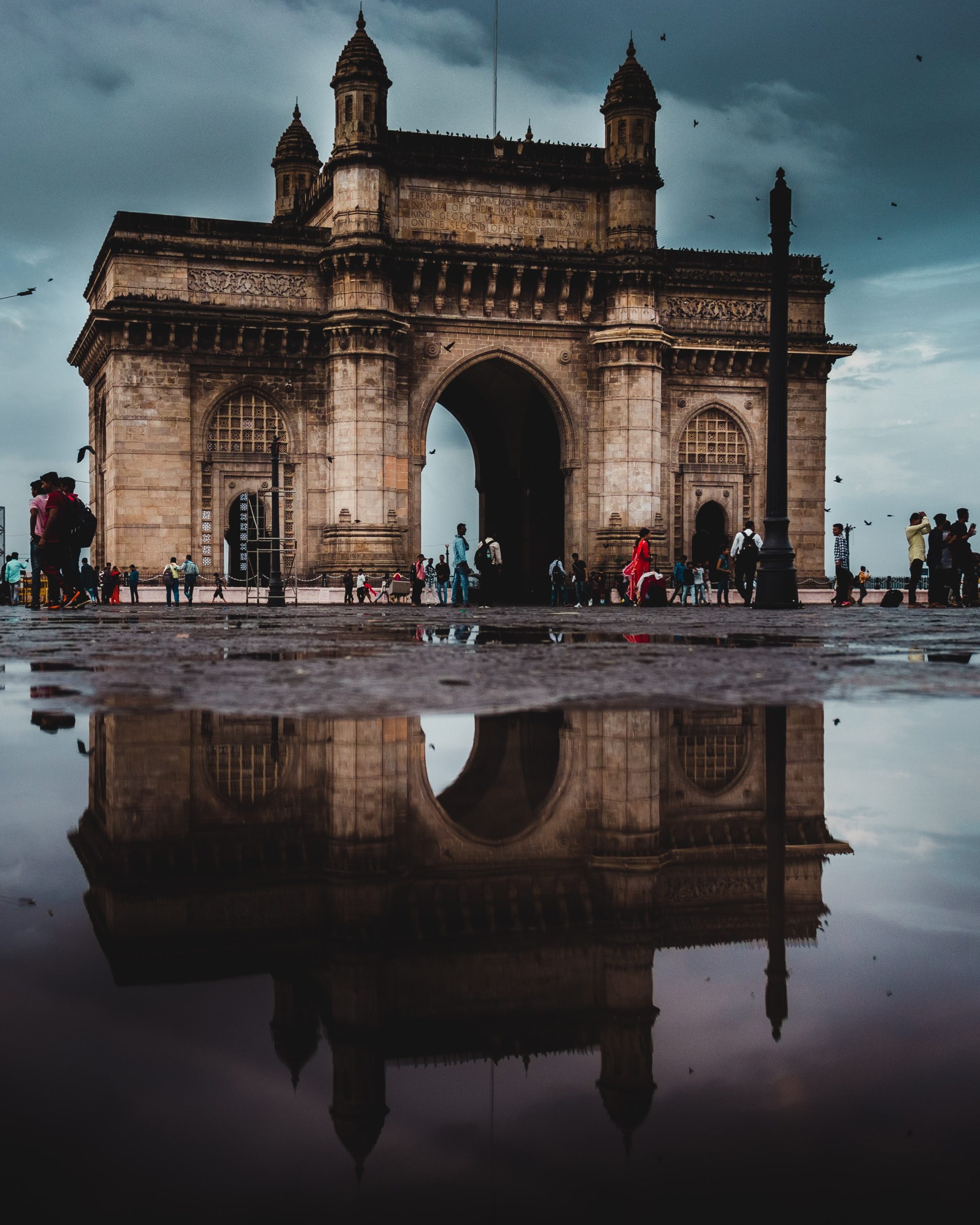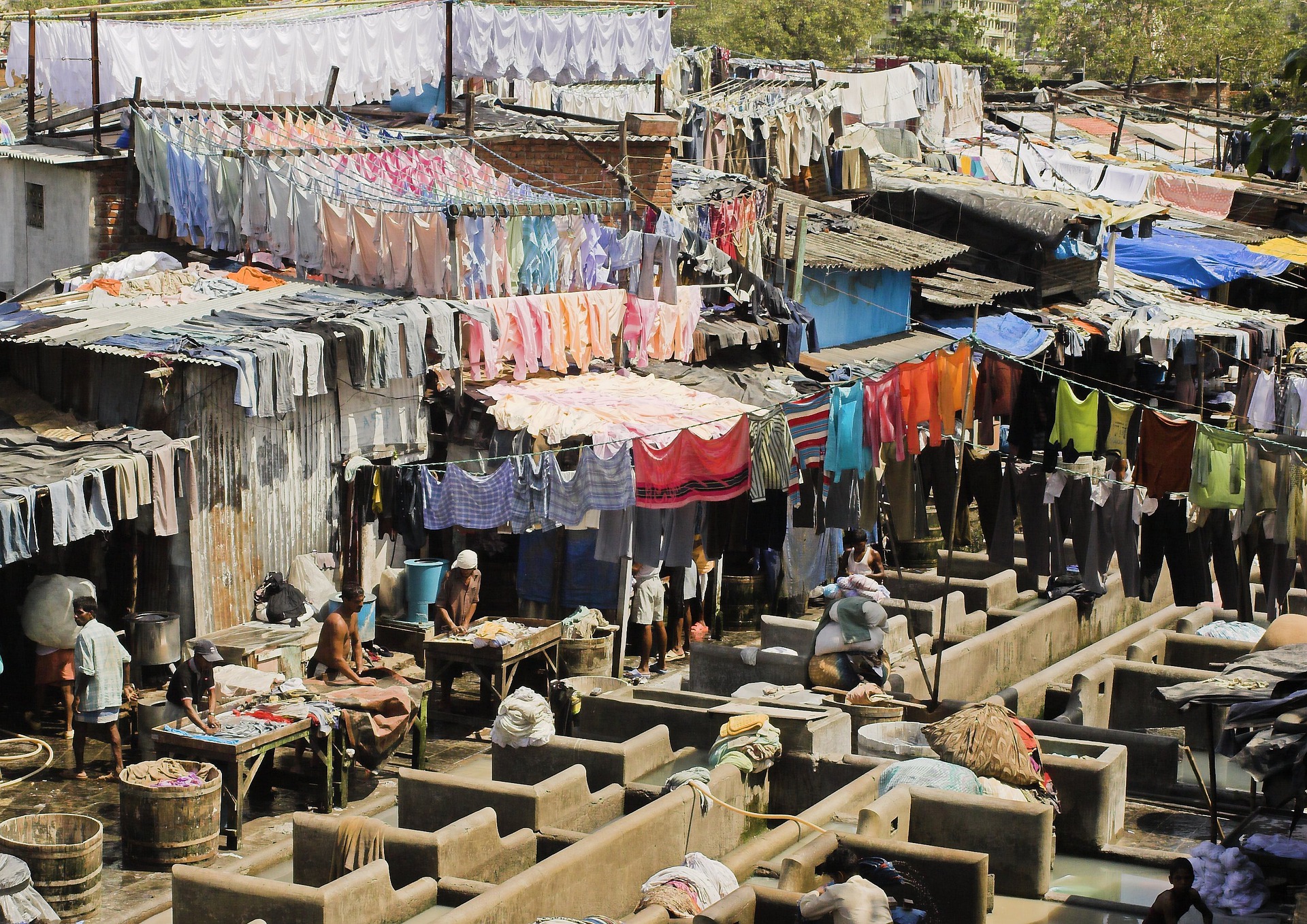
Mumbai is the world’s sixth largest metropolitan area with a population of about 23 million people. Read more about the fascinating Indian city, its past and its current projects, as well as future urban planning challenges.
Billboard
Skyscrapper
Halfpage
Named after the local goddess Mumbai
Mumbai, formerly known as Bombay, is the capital city of the Indian state Maharashtra. The city has an estimated city proper population of 12.5 million and a metropolitan population of 23 million, making Mumbai the largest city in India and the sixth most populous city in the world. It lies on the west coast of India and surrounds a deep natural harbour. Seven islands constitute the city, which used to be the home of Koli people.
For many centuries, Bombay’s seven islands had different indigenous rulers. They were then conquered by the Portuguese Empire and given to the East India Company in 1661. In the 18th century, the Hornby Vellard Project reshaped the city. This consisted of reclaiming the area between the islands from the sea, constructing major roads and railways, and transforming Bombay into a major seaport. Subsequently, a period of economic and educational growth followed in the 19th century, with Bombay still a part of the British empire’s colonies.
In the early 20th century, Bombay was a strong base for the Indian independence movement. The city became part of Bombay State upon India’s independence in 1947. In 1960, the new state of Maharashtra was created and named Bombay as its capital. The name Mumbai, after the local goddess Mumbai, was restored in 1995, although Bombay is still in common use.

India’s financial centre
Today, the Indian metropolis is the de facto financial centre of India. It is also famous for its commerce and entertainment industries. Rated as one of the world’s top 10 centres of commerce in terms of global financial flow, Mumbai produces over 6 percent of India’s GDP. The city also accounts for 25 percent of the country’s industrial output and 70 percent of maritime trade in India.
Mumbai hosts a large amount of billionaire, making it the eight-highest concentration of billionaires in the world and the highest average wealth of any city in the world in 2008. Many important financial institutions, corporate headquarters, Indian and multinational cooperations have their home here.
Some of the country’s premier scientific and nuclear institutes also chose Mumbai as their home. The countless workplaces and business opportunities in Mumbai attract migrants from all over the country.
India’s entertainment centre
“If Delhi is like Washington DC, then Mumbai is like New York City” – this popular comparison holds true in terms of Mumbai’s financial weight, but also in terms of its entertainment industry. As the home of Bollywood, Mumbai is full of aspiring and successful actors. The Marathi cinema industries also have their base here.
Artists often choose Mumbai as their base. The artistic hub offers opportunities for painting, singing, dancing, and of course acting. The annual Kala Ghoda festival and the iconic Prithvi Theatre as well as the Jehangir Art Gallery are key magnets for such talent.
The combination of economic opportunities, quick growth, glittering entertainment, and an attractive boulevard next to the Arabian Sea turns Mumbai into a charming, lively city. There is a fascinating mix of old-world architecture, modern high rises, cultural and traditional structures, nightlife, and cuisine. The city is also comparatively safe and offers good transport links like local trains, buses, auto rickshaws, and taxis.

Mumbai’s architectural highlights
In recent years, Mumbai has invested in improving its seafront promenade. Today, Marine Drive is a lively boulevard that is busy night and day. It is well-lit, barrier-free, and safe for both men and women. Locals call the area the “Queen’s Necklace” because of its night-time lights. There are snack vendours under palm trees, and Juhu Beach offers the opportunity to go for a refreshing drink.
Those looking for the old city should visit Mumbai Harbour to discover the stretch between Colaba Point and the areas known as Mahim and Sion. In the 1950s, the city started expanding further northwards. The Bandra-Worli Sea Link bridge is a result to this expansion, connecting West and South Mumbai across 5.6 kilometres.
Mumbai’s Fort area houses the famous Chhatrapati Shivaji Terminus station, opened in the late 1880s and designed by British architectural engineer F.W. Stevens. The building in the Victorian Gothic Revival style recalls a traditional Indian palace. It is a UNESCO World Heritage Site. Another important sight is the Gateway of India, a 1924 arch structure with a central dome, overlooking Mumbai Harbour.
Opposite the famous Taj Mahal Palace Hotel, the Arabian Sea stretches out. Those wanting to explore the coast can visit Elephanta Island, an entrance into Mumbai Harbour from the sea. There are several harbour islands, but Elephanta is the most popular due to its 8th and 9th century Hindu cave temples.

Urban planning challenges in Mumbai
Mumbai is in a tropical zone, meaning that every summer there is a monsoon. In recent years, due to climate change, the monsoon rains have been particularly heavy, causing chaos on Mumbai’s streets and livelihood threats to many of the city’s inhabitants of informal settlements. Another environmental challenge in Mumbai that is closely connected to urban planning is pollution: air and water in the city experience high levels of pollution. Traffic is often stuck in gridlock, and the nearby factories and oil refineries exacerbate the problem.
Housing in Mumbai is largely privately owned, although the government is working on building more public housing. The city is overcrowded and for anyone apart from the wealthy, housing is very scarce. Many enterprises are finding it increasingly difficult to attract mid-level staff. At the same time, there are high immigration rates. Many less educated people come to Mumbai looking for unskilled labour. While work is relatively easy to find, homes are not, creating a large homeless population. To overcome this, city planners have encouraged businesses to locate across Mumbai Harbour to Navi Mumbai to free up space inside the city. However, these efforts have been largely unsuccessful.
The Indian metropolis also houses what might be the world’s largest informal settlement, Dharavi. Well over a million people live here. Vision Mumbai is a governmental plan to improve this settlement by constructing high-quality, high-rise tower blocks and providing sewage treatment plants and water recycling facilities.
Over the next years, Mumbai’s key challenges in urban planning will be affordable housing, environmental-friendly growth, and tackling the housing crisis.
The country’s 2022 budget plan focuses on urban planning and clean transport – read more about Nirmala Sitharaman’s plan.












